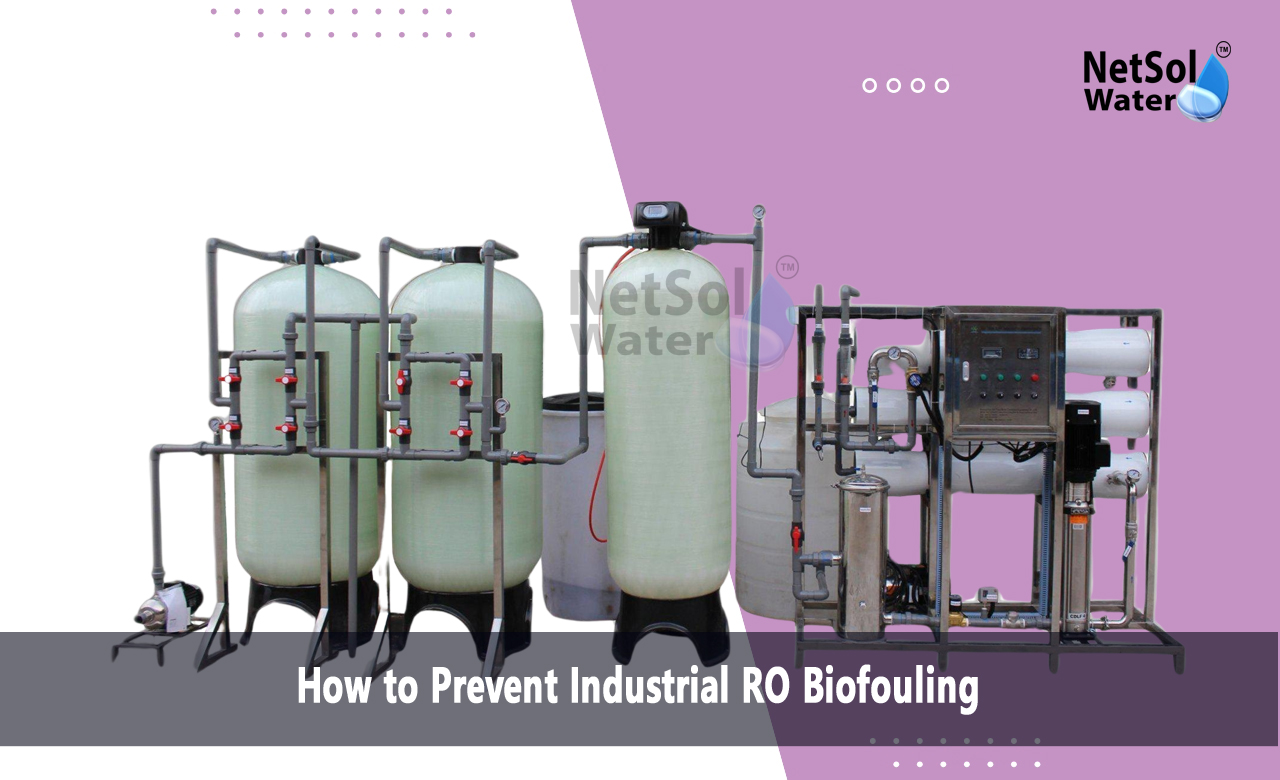How to Prevent Industrial RO Biofouling?
Industrial RO plants face persistent challenges due to biofouling. Microorganisms accumulate on membrane surfaces and create large operational problems for water treatment facilities. The biological buildup obstructs water flow and causes damage to expensive equipment. Plant operators must implement effective prevention strategies to protect their systems. Appropriate prevention methods enhance system performance and maximize membrane lifespan. This blog will walk you through practical steps to prevent industrial RO biofouling using established maintenance practices. You will learn about pretreatment methods, monitoring techniques and cleaning protocols. Plant operators who follow these solutions maintain cleaner RO plants and produce consistently high-quality water.
What is the Biofouling Process?
RO membrane biofouling develops through specific stages that operators must recognize to prevent industrial RO biofouling effectively. Feed water introduces microorganisms that attach to membrane surfaces. These first organisms secrete adhesive compounds that facilitate further bacterial attachment. The biofilm expands as bacteria reproduce and capture additional materials. This leads to a thick barrier that hinders water passage through the membrane. When operators understand this sequence, they can take action at crucial moments. Operators who monitor their systems regularly can spot potential problems early. Plant managers should concentrate on stopping the initial attachment stage. This approach prevents mature biofilms from developing as they present greater removal challenges. Let us have a look at some key aspects of the biofouling process:
Biofilm Formation Stages
Free-floating bacteria initiate the process by contacting the membrane surface. These bacteria establish anchoring points for additional microorganisms. The growing bacterial community generates extracellular polymeric substances. This protective matrix shields the biofilm from treatment methods.
Impact on System Performance
Biofilm buildup creates resistance to water flow. Operators must increase pressure to maintain production levels. Biological deposits can cause permanent membrane damage. The system loses efficiency as fouling progresses.
Contributing Factors
Multiple conditions accelerate biofilm growth. These include elevated temperatures abundant nutrients and stagnant areas. Operators who track these parameters minimize fouling risks. Testing procedures help identify emerging issues before performance suffers.
Effective Pretreatment Methods
Plant operators must establish strong pretreatment programs to prevent industrial RO plant biofouling in water treatment systems. Effective pretreatment eliminates contaminants that fuel biological growth. This creates conditions where microorganisms cannot thrive. Operators should design comprehensive pretreatment plans based on their specific feed water composition. Regular assessment ensures that pretreatment continues to deliver optimal results. Let us have a look at some essential pretreatment approaches:
Media Filtration
Multi-media filters capture suspended solids from incoming water. This minimizes available particles for biofilm development. Operators maintain filter performance through regular backwashing. Pressure differential monitoring across filter beds guides maintenance timing.
Chemical Treatment
Oxidizing biocides eliminate microbial populations in feed water. Non-oxidizing biocides offer extended protection periods. Operators select chemicals based on system needs and regulatory requirements. Precise dosing protects membranes while maintaining antimicrobial effectiveness.
Membrane Filtration
Ultrafiltration or microfiltration systems enhance protection levels. These membranes block smaller particles and microorganisms. This produces higher-quality feed water for the RO system. Regular testing confirms membrane integrity.
Monitoring and Maintenance Protocols
Plant operators who monitor their systems consistently detect potential industrial RO biofouling problems early. Clear protocols guide system inspection and maintenance activities. Data collection reveals trends before serious problems develop. This proactive strategy prevents unexpected shutdowns. Operators align maintenance schedules with operational demands and water quality targets. Let us have a look at somemonitoring elements:
Performance Tracking
Operators must document key parameters including pressure differential and flow rates. Parameter changes signal developing fouling issues. Historical data reveals seasonal patterns and systemic problems. Timely analysis enables swift intervention.
Membrane Inspection
Physical examinations expose membrane fouling patterns. Membrane autopsies provide insights into deposit composition. This information guides treatment protocol optimization. Operators must maintain detailed inspection records.
Water Quality Analysis
Regular testing identifies feed water characteristic changes. This includes bacterial count and nutrient level monitoring. Unusual measurements prompt investigation. Proper sampling methods ensure measurement accuracy.
Conclusion
Plant operators who want to prevent industrial RO plant biofouling must follow systematic management approaches. Your facility needs comprehensive prevention strategies. These include appropriate pretreatment, consistent monitoring and scheduled maintenance. Success comes from understanding your system dynamics and addressing changes promptly. Our water treatment specialists stand ready to help. Our experts will assess your system and provide targeted recommendations. Contact us today to schedule your consultation. We will work together to develop an effective protection plan for your RO plant.
Contact Netsol Water at:
Phone: +919650608473, Email: enquiry@netsolwater.com



